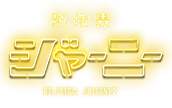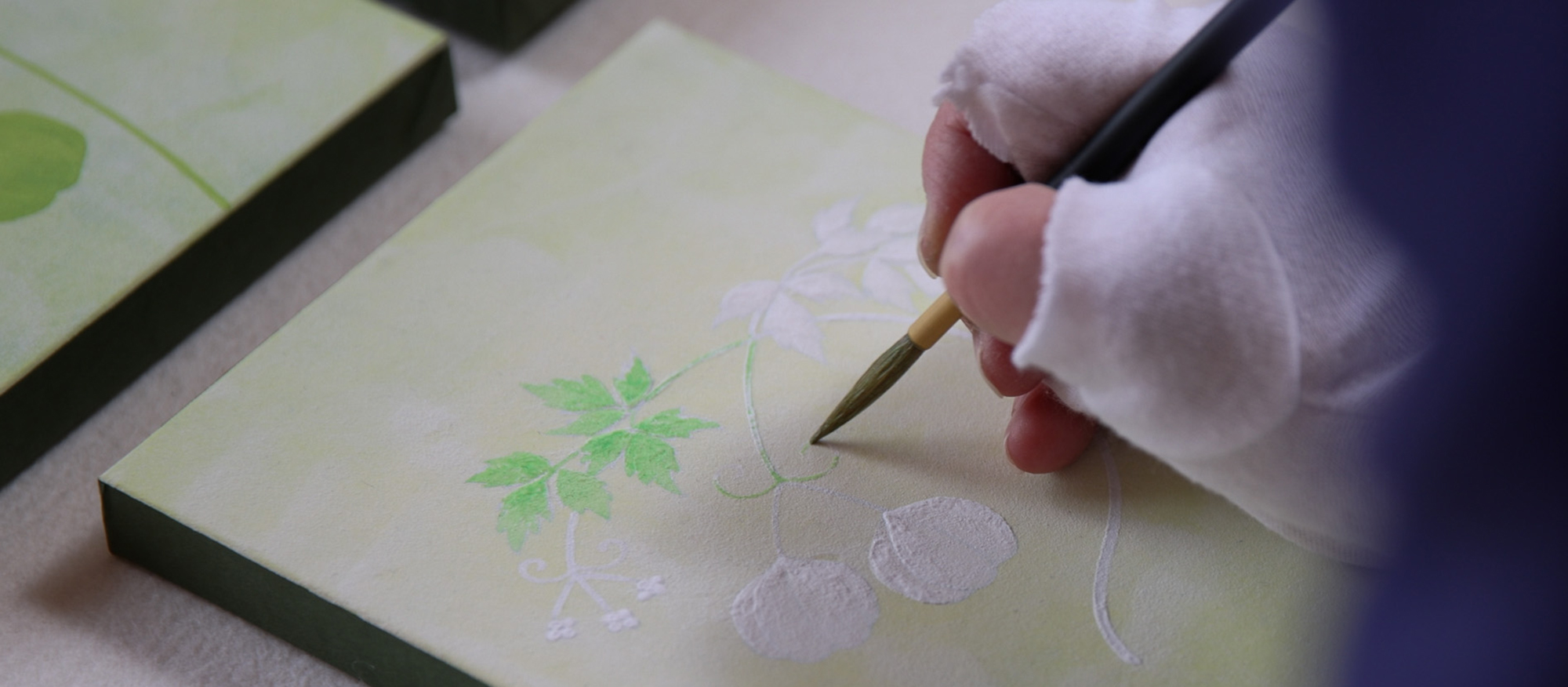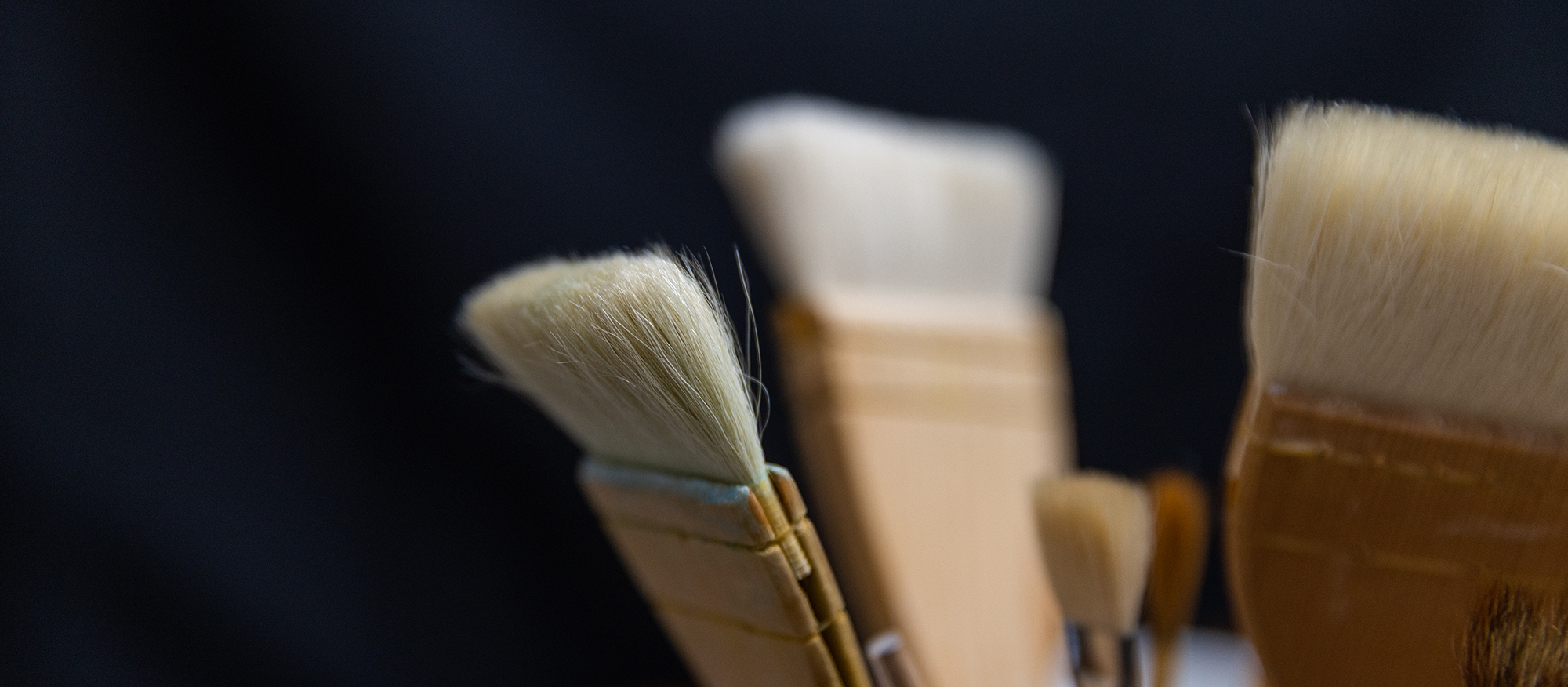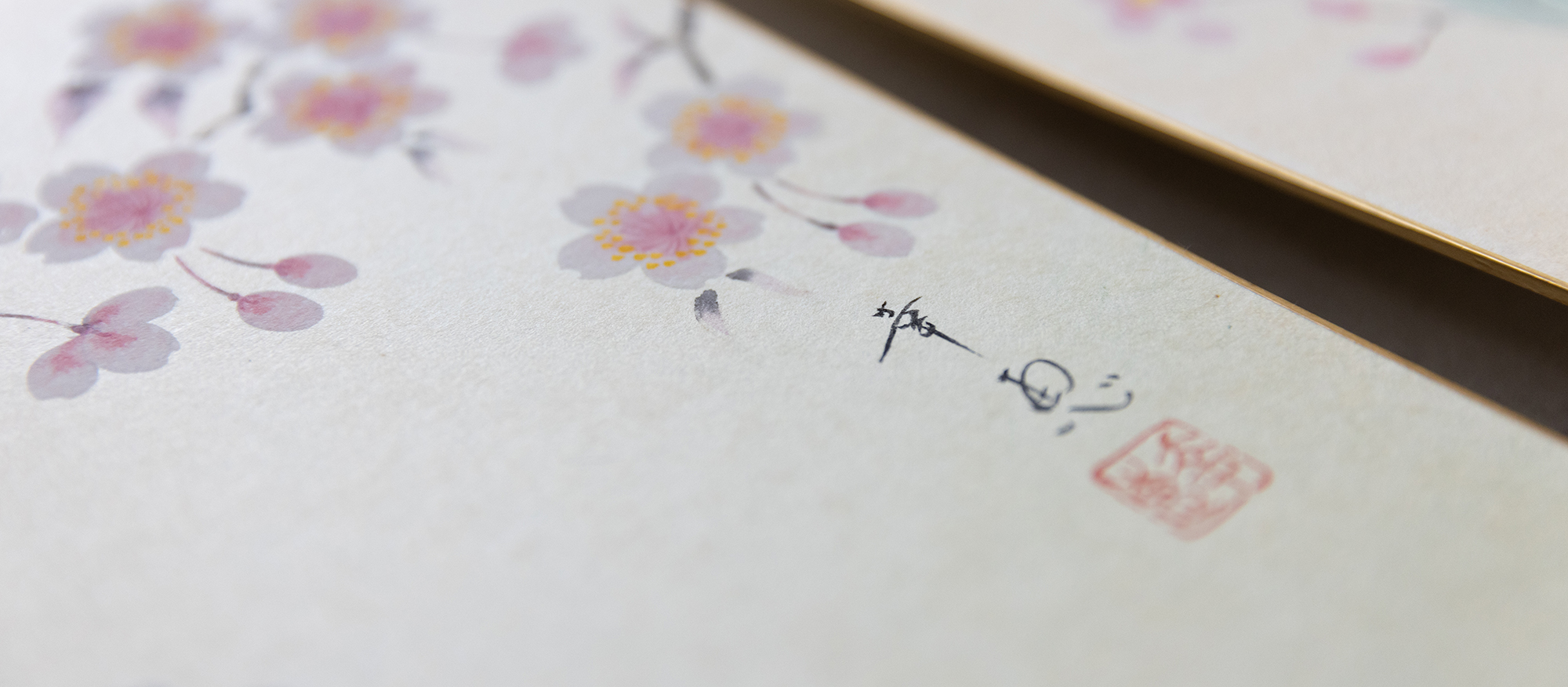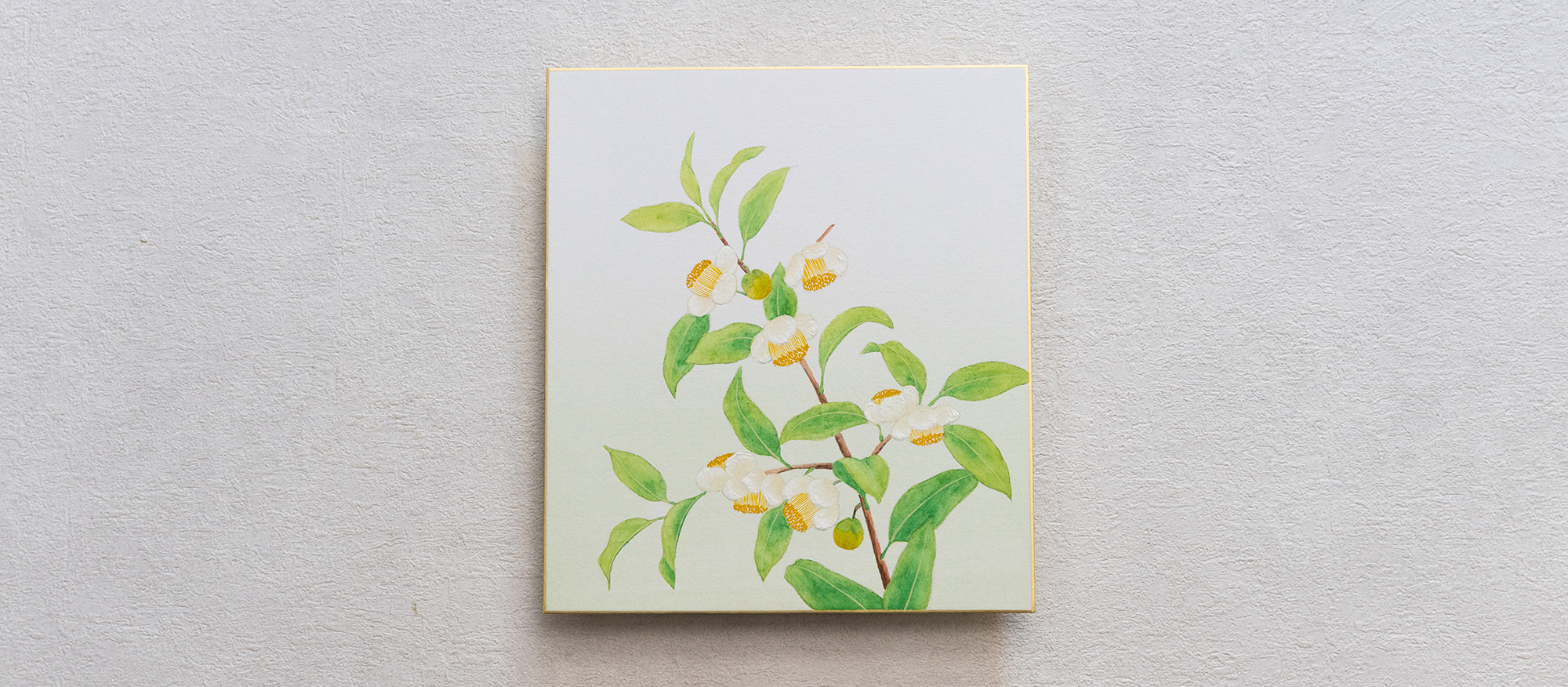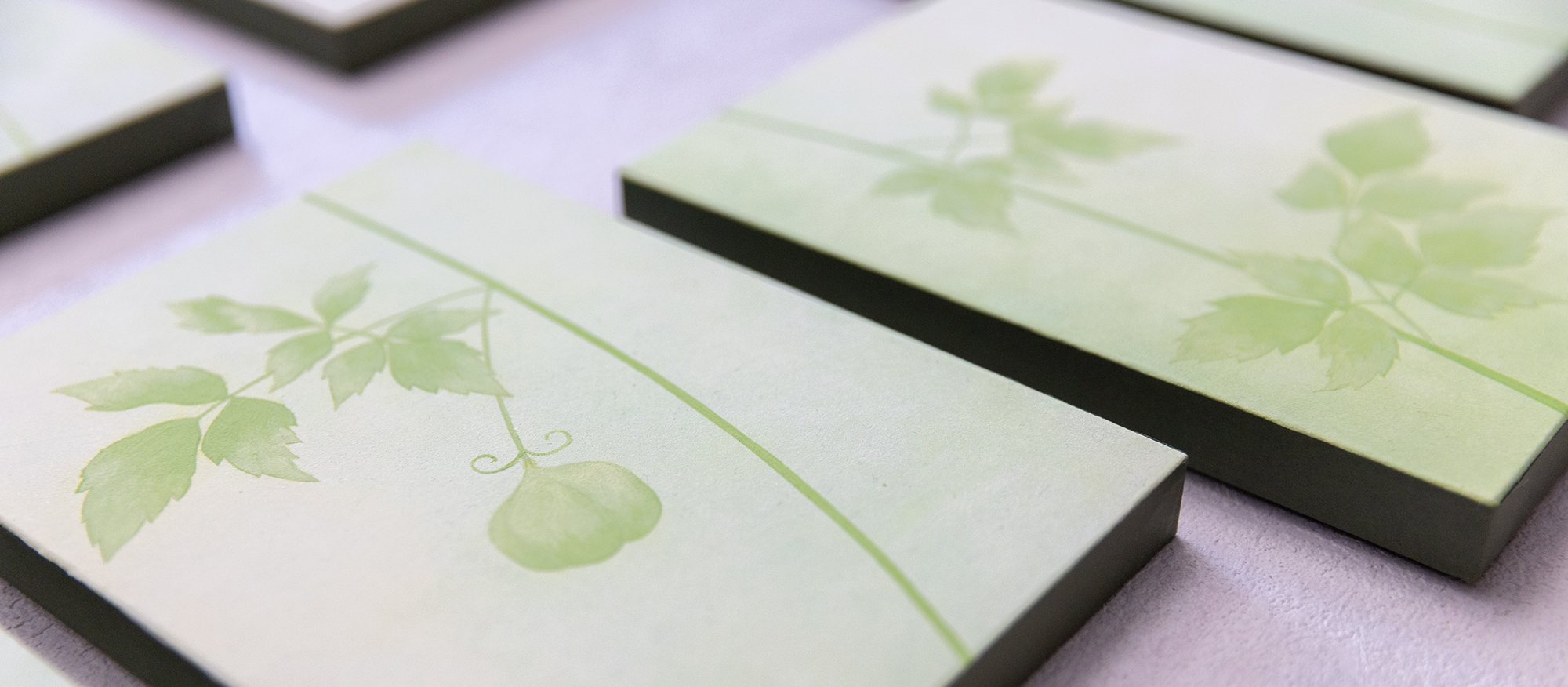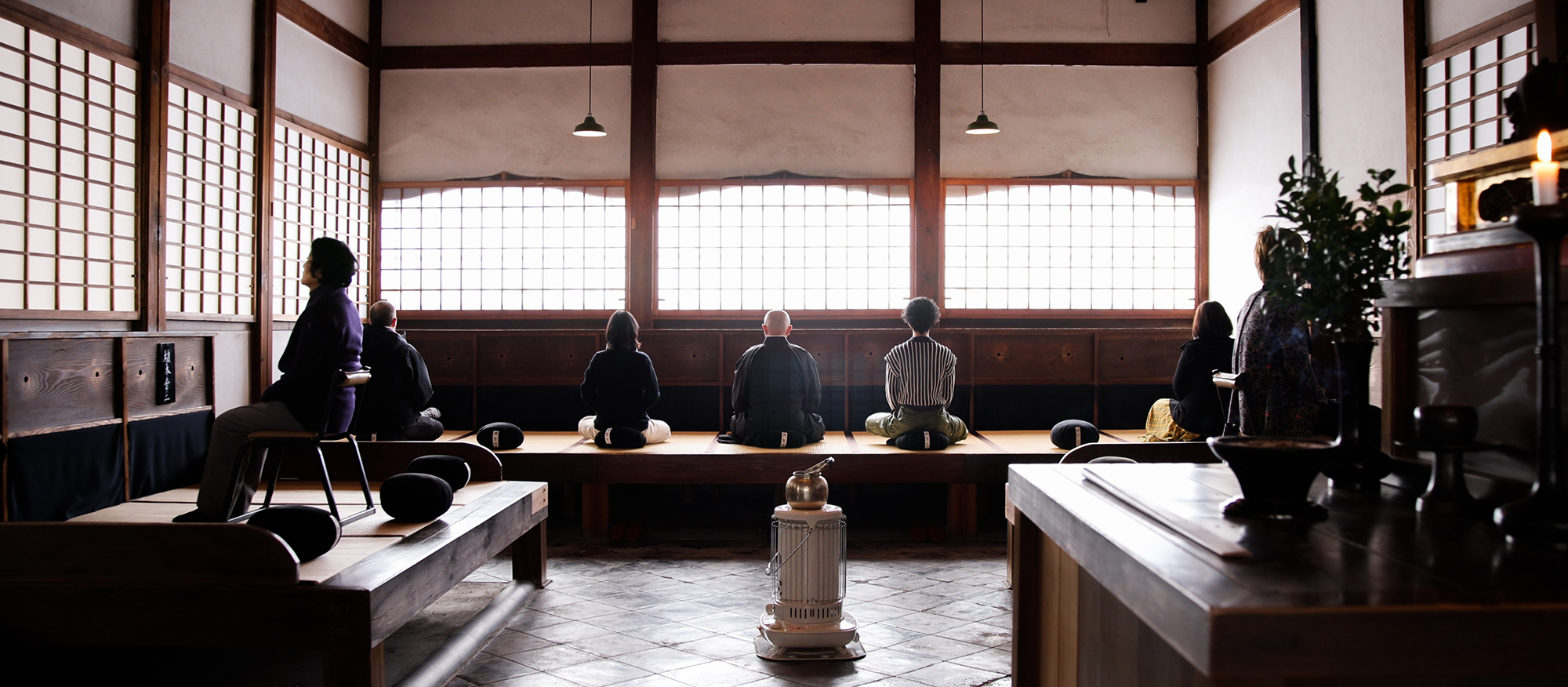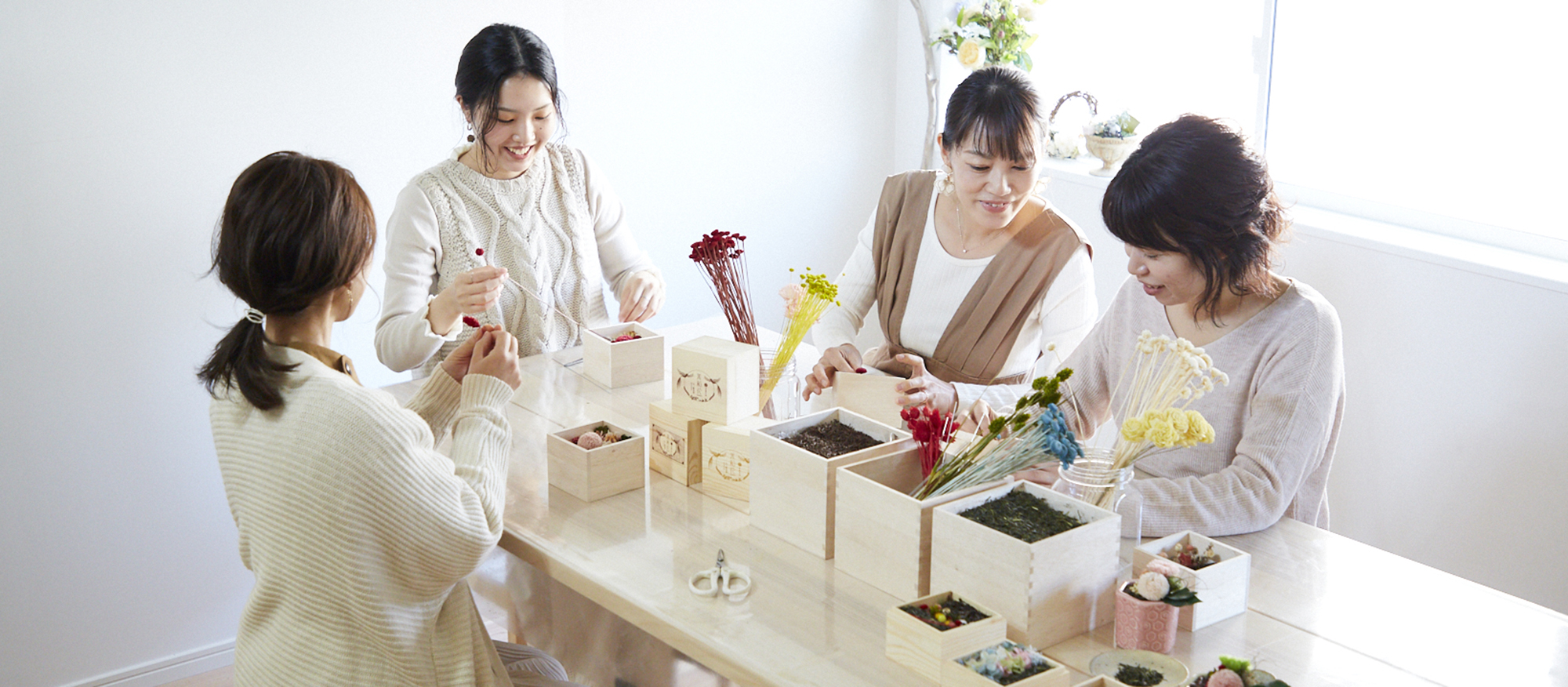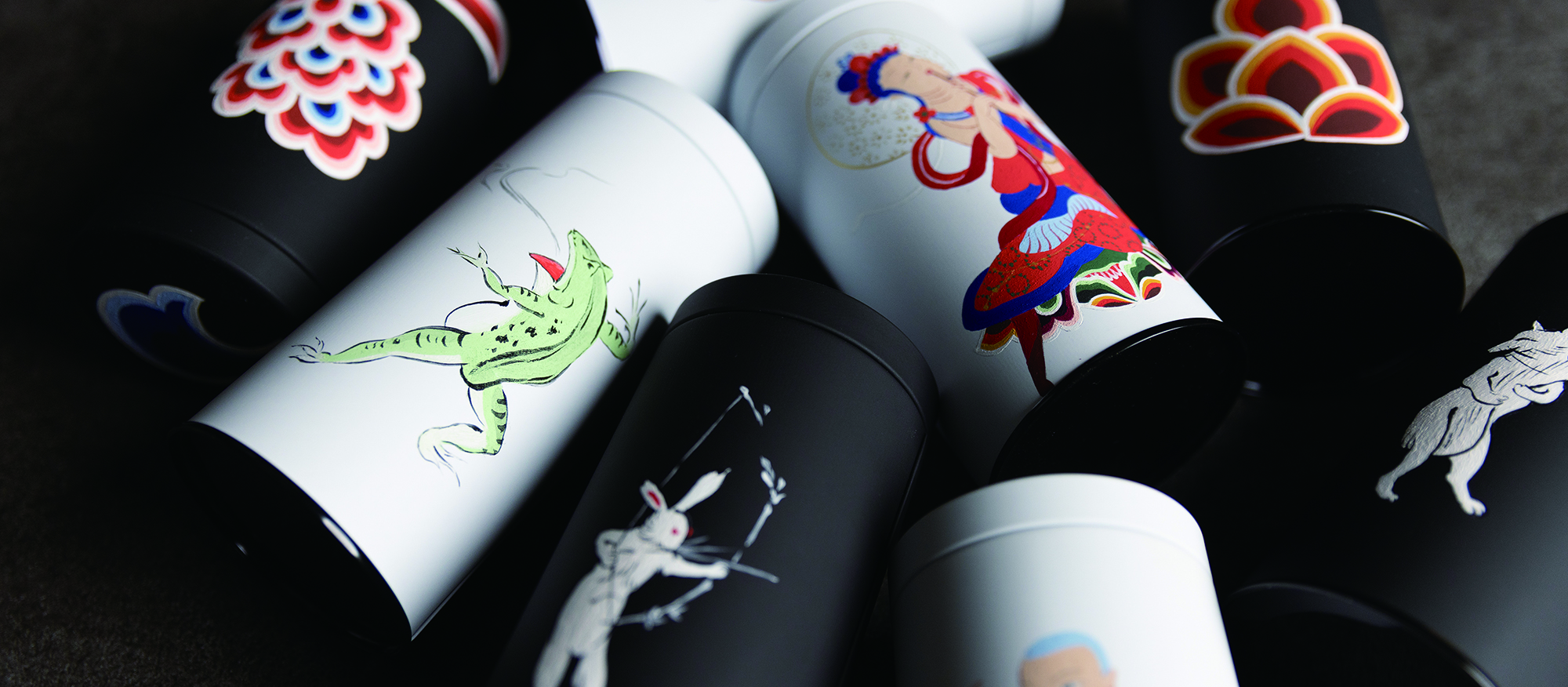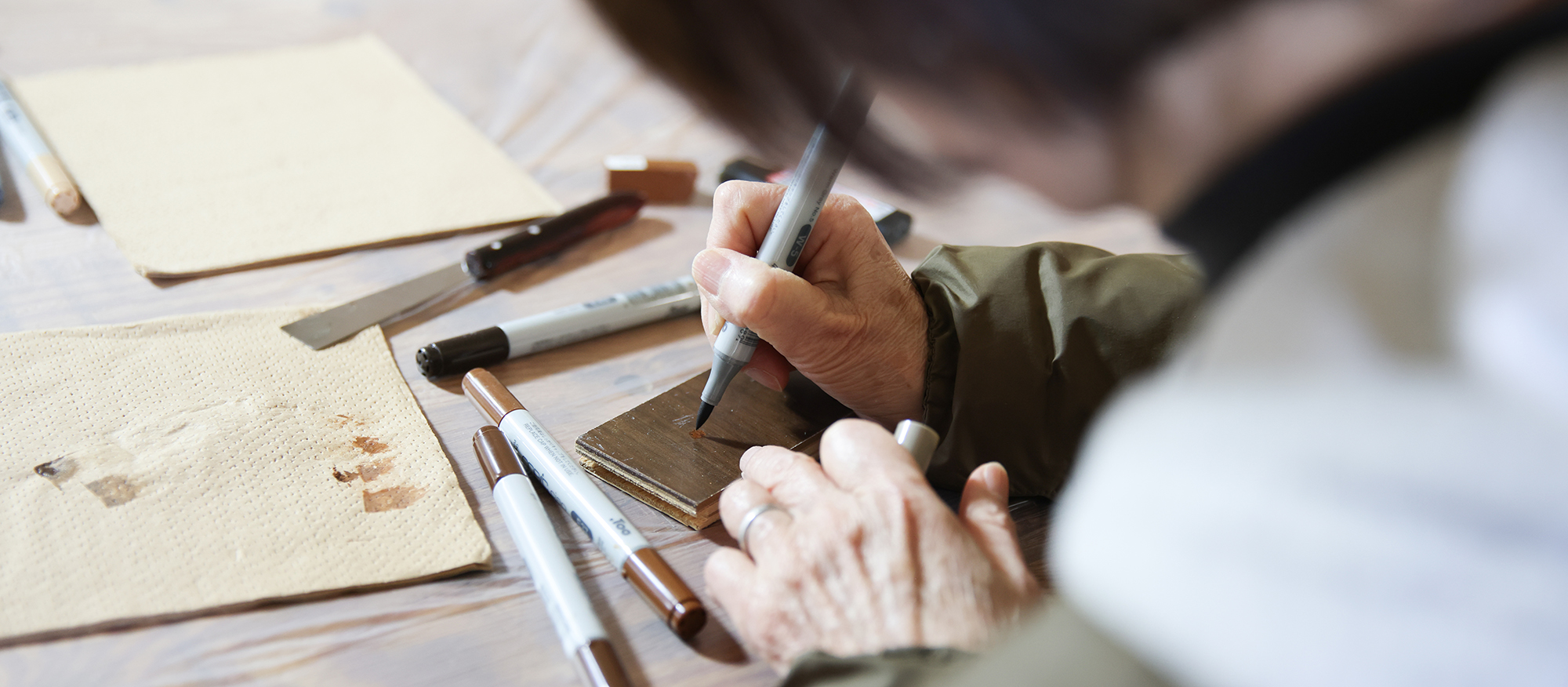Art History, Culture, Nature
A full-fledged Japanese painting experience by a Japanese artist who leads a renowned class in Gion, Kyoto
Tour Number 05
Proceed to booking


Tour Features
▶︎About this experience
Nihonga is based on a traditional Japanese painting style and techniques used for over 1,000 years, and its painting materials are also traditional materials cultivated through history. Natural paints such as ink, mineral pigments, whitewash and dyes are used on paper, silk, wood and plaster, and glue is used as an adhesive. Japanese painting materials are not easy to handle, and it takes time and perseverance to master the manufacturing method. During the approximately 3-hour experience, we will select and draw themes from Uji tea flowers unique to Uji, cormorants for cormorant fishing in the Uji River, and rabbits associated with Uji Shrine.
▶︎Instructor
You will receive direct instruction from Ms. Yukie Kutsuwada, who leads a Japanese painting class in Gion, Kyoto.
After majoring in Japanese painting in college, Mr. Kakuta was involved in the traditional Japanese culture of Nishijin kimono, and later she was involved in the restoration of famous cultural properties in Kyoto. She is an instructor with a wealth of experience and proven accomplishments.
Tour Program
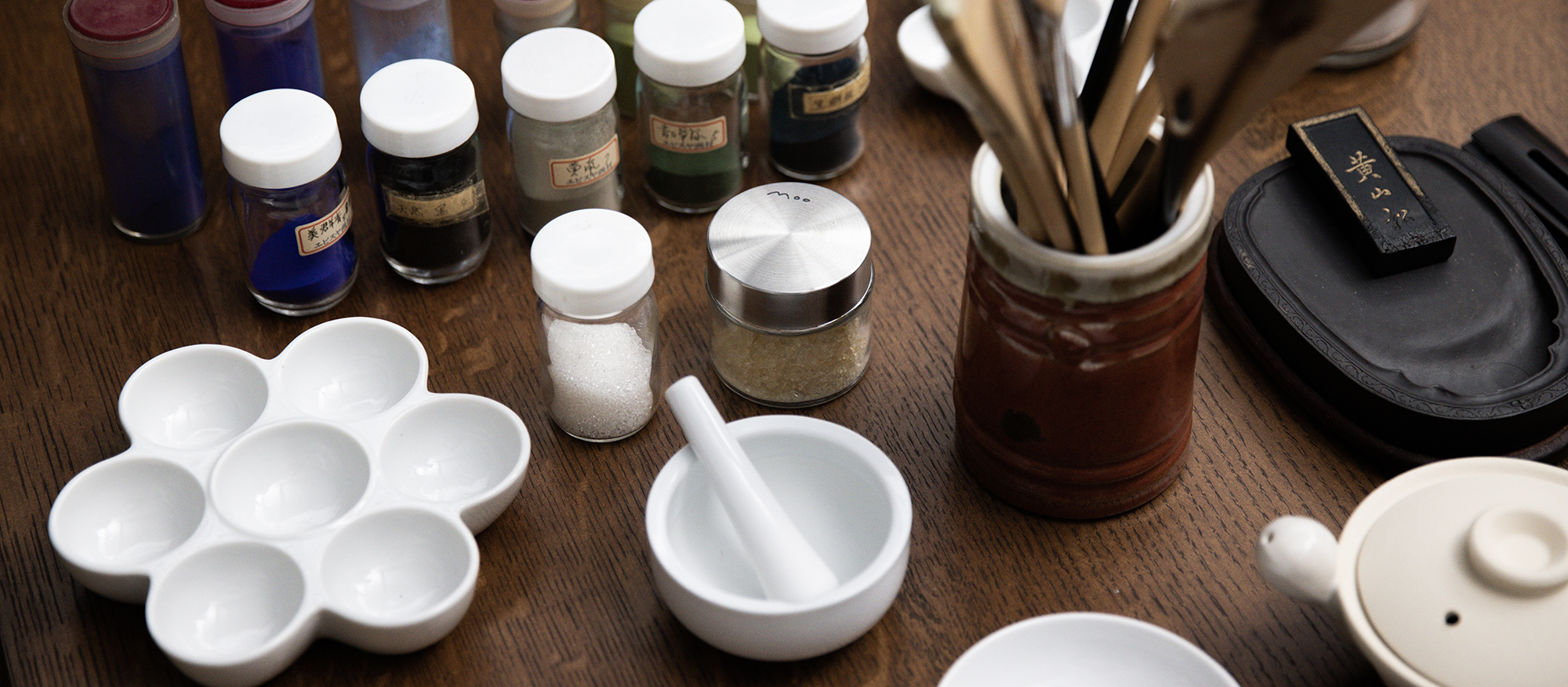
We use full-fledged art materials exclusively for Japanese paintings.
Suihi pigments, passed down from ancient times, are used for coloring.
Pour the fine particles of nihonga suihi pigment onto a plate and crush it with your fingers or pinch it with paper to make a powder.
The gofun (white paint) is made with mortar.
Grind the gofun in a mortar until it turns into a powder, then add glue, made from animal skin which clumps the paint, and form a ball. Hit the paint plate until the particles and the glue mix.
Next, add water to the dumpling and dissolve it with your finger until it reaches an easy-to-draw concentration.
Then just draw. First we will draw on colored paper.
Japanese painting has several production processes, and it takes time, but you can focus on each process and immerse yourself in finishing the work, while enjoying the time to immerse yourself in the concept of "RojiUra Journey". Take this journey to become aware of your current self.
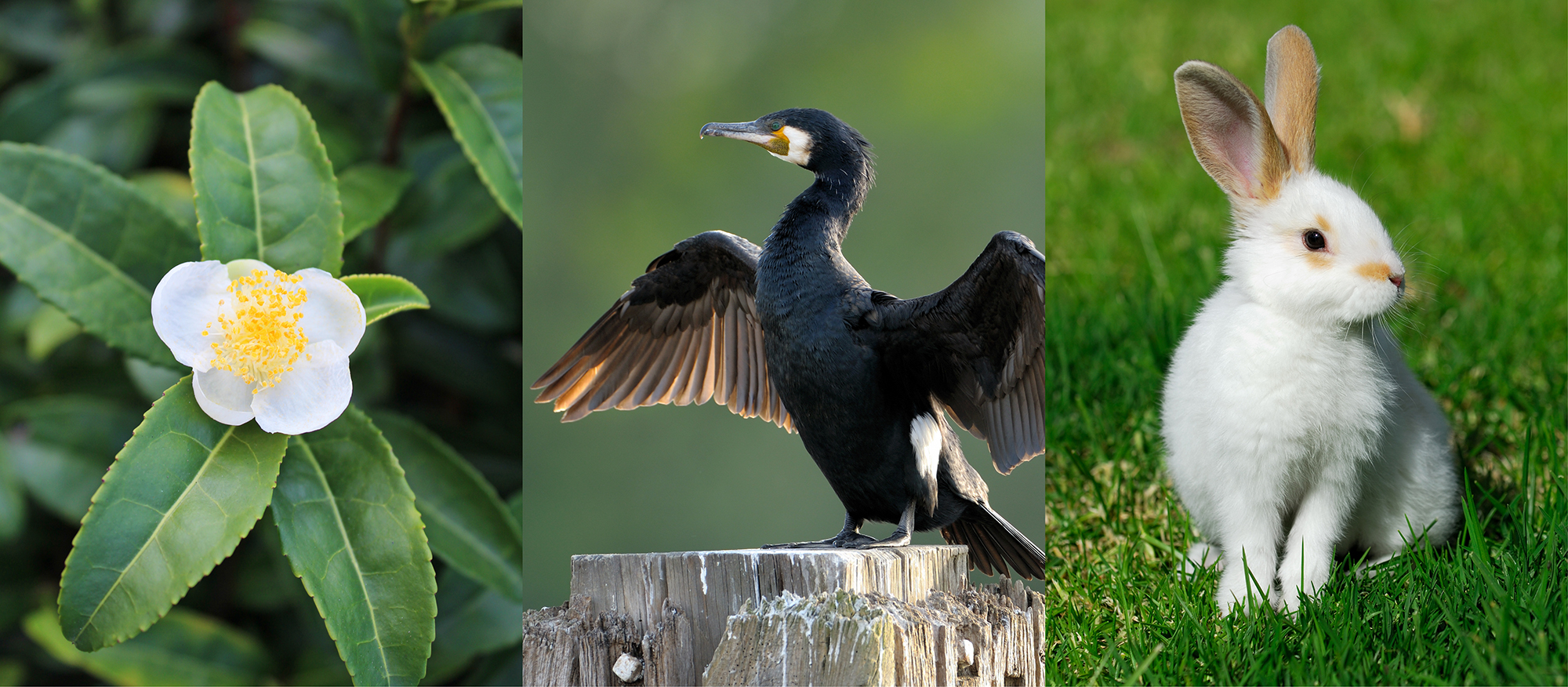
The subject to be drawn is chosen from three themes related to Uji.
1. Uji flower tea, a specialty of Uji, Kyoto
Ujicha tea is a famous product of Kyoto and Uji, and one of the three most famous teas in Japan. Ujicha tea began to be cultivated in the Kamakura period around 1300 AD. When Myoe received tea seeds from Eisai from China, he brought them to Uji. The Uji tea tree has pretty white flowers. Let's draw the flower as the theme.
2. Cormorants in the Uji River
Cormorant fishing in the Uji River is said to have already started around 1000 AD, the Heian period. It is one of the fishing methods in which cormorants freely catch fish at the water's edge and then are called back by fishermen. Therefore, the relationship of trust between the fisherman and the cormorant is most important. It has become a summer feature of Uji.
3. The Famous Rabbits of Uji Shrine
Around 1,700 years ago, Uji no Waki Iratsuko no Mikoto, the son of Emperor Ojin, was worshiped as the tutelary deity of Uji. When he got lost on his way to this land from Kawachi Province, a rabbit appeared and guided him to the right path while repeatedly looking back. His name is "Mikaeri Usagi" and it is said that if you come across three bunny figurines, your wish will come true.
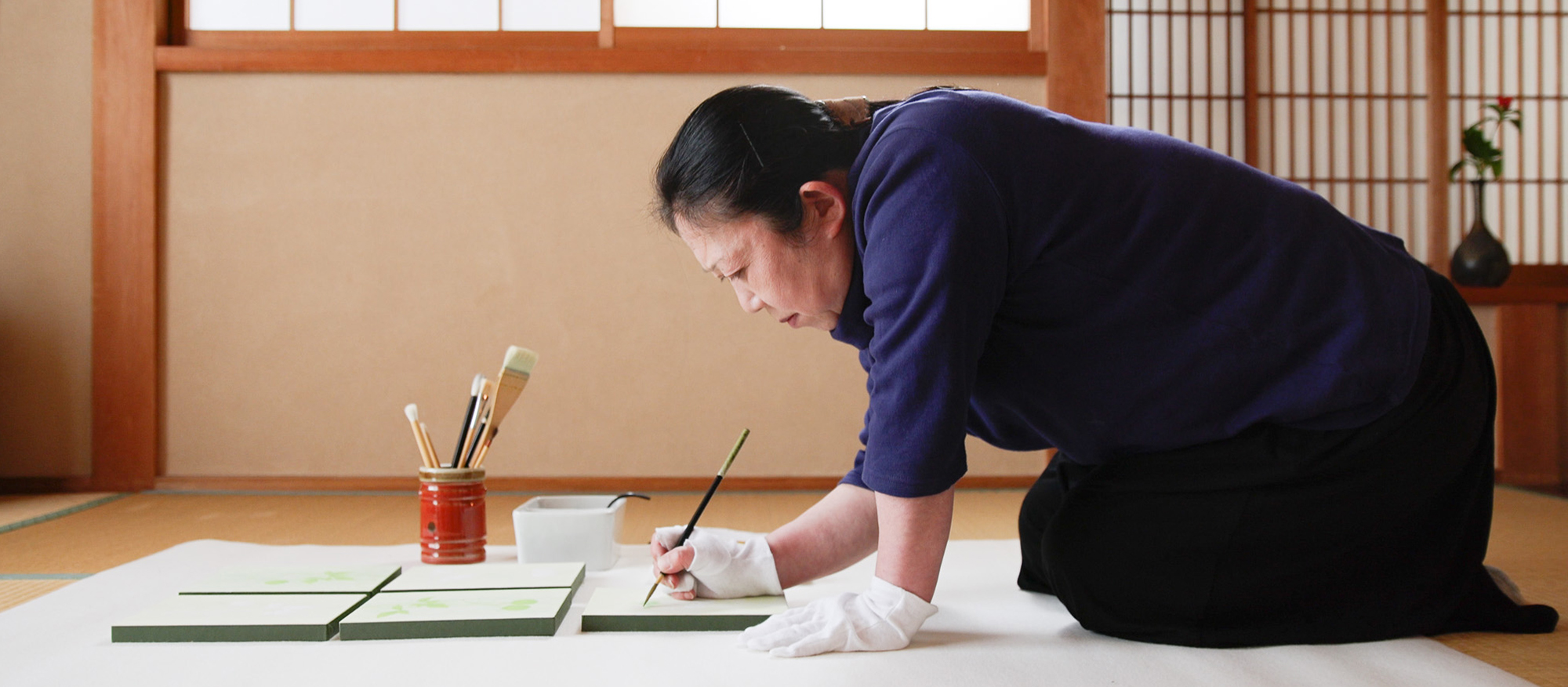
Master of the Japanese painting classroom, Ms. Yukie Kutsuwada
Après une spécialisation en peinture japonaise à l'université, M. Kakuta a été impliquée dans la culture japonaise traditionnelle du kimono Nishijin, et plus tard, elle a été impliquée dans la restauration de célèbres biens culturels à Kyoto. C’est une instructrice avec une riche expérience et des réalisations reconnues.
Profil
Quand j'étais à l'école primaire, j'ai commencé à fréquenter un atelier local pour enfants, et c'est ce qui m'a inspiré à dessiner. J'ai tellement aimé ça que j'ai continué, en me spécialisant dans la peinture à l'huile quand j'étais au collège et au lycée, puis en me spécialisant en peinture japonaise à l'université. Je pense que j'étais vraiment attiré par l'atmosphère des peintures japonaises. Après avoir obtenu mon diplôme, j'ai trouvé un emploi dans la fabrication de kimono Nishijin. À cette époque, j'ai commencé à faire des rouleaux suspendus afin de pouvoir dessiner sur les écrans de soie utilisés pour écrire la calligraphie et les peintures. Après cela, j'ai été impliqué dans la restauration de biens culturels par le destin, et j'y ai été impliqué jusqu'à présent. Je pense aux motifs des kimonos, en créant des peintures japonaises, comme des volutes suspendues, etc. Quant aux biens culturels, j'ai créé diverses peintures et sculptures pour des temples et des sanctuaires. J'aimerais pouvoir vous en parler plus lors de cette expérience.
Diplômée du Département de Peinture Japonaise, Saga Art Junior College, Membre de l'Exposition (Peinture Japonaise)
Expérience récente dans le domaine de la peinture
Gishumon Metal Ink Ink, Kyoto Imperial Palace Metal Ink Ink, Rengejoin Door Painting New, Nakazanji Kannondo Ceiling Coloring, Myoshinji Nio Statue Coloring, Phoenix Ceiling Painting New, Shoonji Temple, Rensuiji Temple Destruction Compensation, Cloud Hyogu Painting Creation / Gokuraku-ji Temple Shotoku Statue Taishi / Temple Jodoji Sculpture Chozuya / Salle principale du sanctuaire Shimogamo Restauration Shishi Komainu / Temple Higashi Honganji Raccords métalliques Miei-do / Ninna-ji Kondo Gofun-nuri / Temple Byodoin Restauration Raboku-do Azou / Kiyomizu-dera Amida-do Okunoin / Hino -o Sanctuaire Main Hall Conservation and repair/Tanakura Mago Temple Shoubai-ji Peinture encadrée New Style/Yasaka Shrine Omiya Signboard Painting/Nagusa Shrine Worship Hall Main Hall Painting/Hogonji Kannondo Coloring/Kumano Nachi Taisha Worship Hall Painting/Kabashiri Shrine Main Hall Peinture/Temple Enryakuji Peinture de la salle Konponchudo
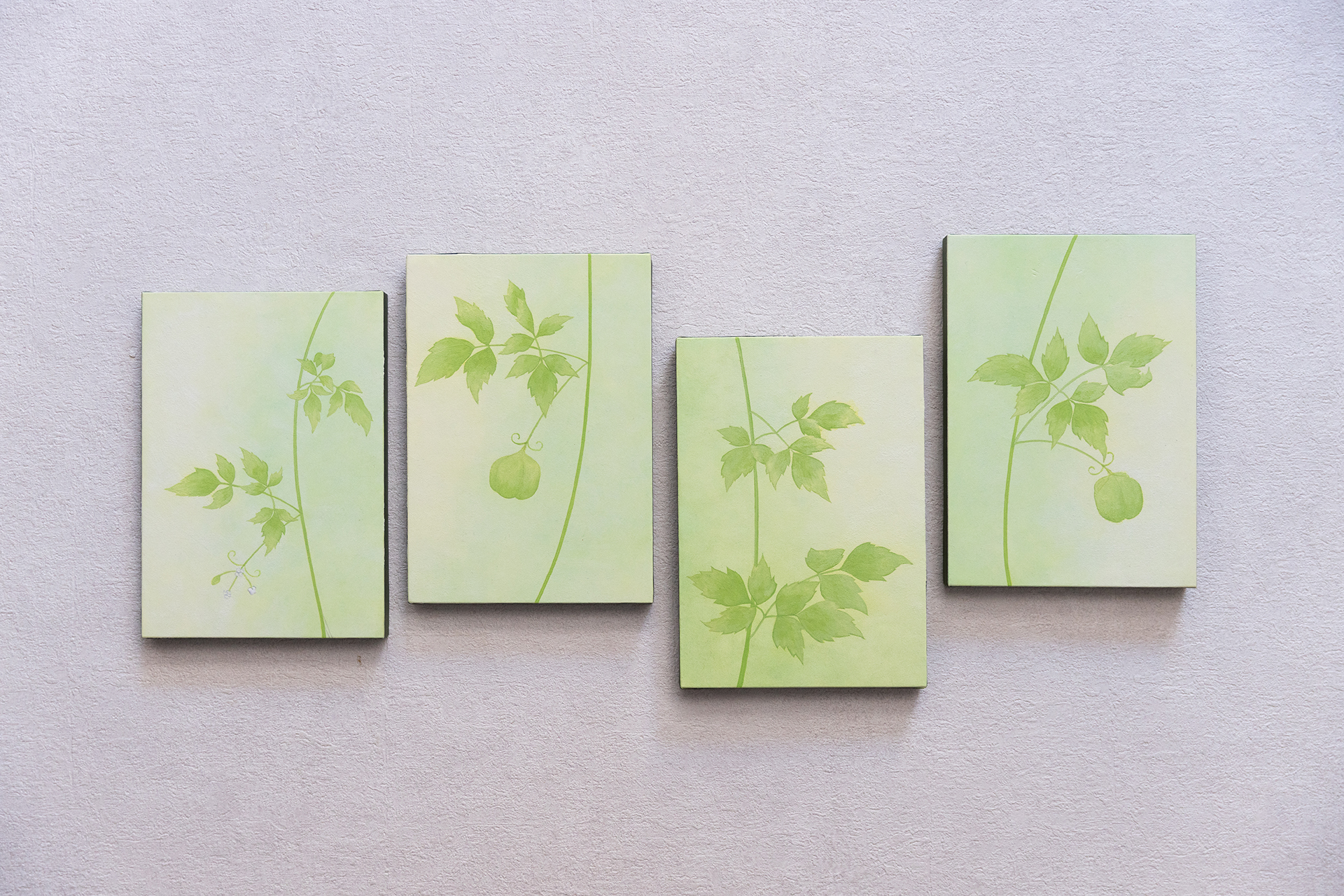
Tour Details
Tour Number 05
* What is included in the price
Japanese Calligraphy Instruction Fee, Experience Fee, Material Cost, Facility Use Fee, Guide Interpreter
* The same participation fees will be charged for those over 6 years old.
※As the experience is based on a group charter, it is possible to bring children.
30% from 3 days up to 2 days before
* The same participation fees will be charged for those over 6 years old.
* We usually don't have foreign language speaking staff, so please contact us by email.
* This is an experience requiring an interpreter guide. If you do not need an interpreter guide, please contact us from here (reservation page for domestic use).


